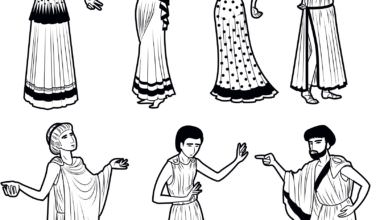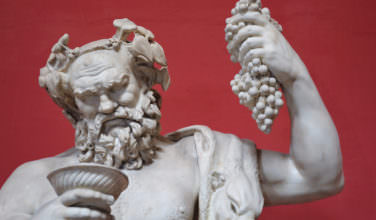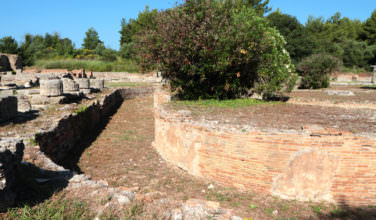Terpsichore – Muse of Dance and Chorus
Comments Off on Terpsichore – Muse of Dance and Chorus
 Terpsichore, one of the Nine Muses, is also known as the Mother of the Sirens in Greek mythology. As one of nine Muses and has been anointed the Goddess of Dance and Chorus. Muses are the heart and soul of inspiration for creative endeavors. Music plays a very important role in Greek mythology and was seen as a sign of sophistication. Because of this, she is a favorite muse in the modern age as well as one of the most well-known in the world of dance and music. Here is more information about her:
Terpsichore, one of the Nine Muses, is also known as the Mother of the Sirens in Greek mythology. As one of nine Muses and has been anointed the Goddess of Dance and Chorus. Muses are the heart and soul of inspiration for creative endeavors. Music plays a very important role in Greek mythology and was seen as a sign of sophistication. Because of this, she is a favorite muse in the modern age as well as one of the most well-known in the world of dance and music. Here is more information about her:
About Terpsichore’s Family
Terpsichore is one of nine daughters of Zeus and Mnemosyne, the Goddess of Memory. There are many tales about Terpsichore related to her lineage, but the most accepted belief is the one Hesiod established. Zeus had an affair with Mnemosyne, and over the course of nine days produced nine daughters.
While Terpsichore was generally a friendly goddess, her Sirens had a naughty side. The Sirens were fathered by Achelous, the god of the Phorcys river in Greece. Her offspring were beautiful singers, stemming from Terpsichore’s love of music. They are infamous for luring sailors to their death with their melodic voices.
There is one story that reveals a darker side of Terpsichore. According to the tale, her Sirens challenged the nine Muses to a singing contest. The Muses won, but Terpsichore was not happy and harshly disciplined the Sirens for daring to challenge her.
She is also the mother of Linos, whose father was Apollo. Linos followed in his mother’s footsteps and was a skilled musician. Terpsichore was mother to the Thracian king, Biston. His father was the God of War, Ares. Rhesus, another Thracian king can claim Terpsichore as his mother and his father was the Strymon, another river-god.
Terpsichore as a Goddess
As with most goddesses in Greek mythology, Terpsichore was beautiful. Terpsichore and her sisters were often drawn as nymphs or garden fairies. She could play a variety of instruments and was considered to be very talented in all things music. In most depictions, she is carrying a lyre. The instrument resembles a harp and because of its size, she is usually sitting down in the various artwork and statues of her. Some sketches have her playing the flute. Her creative nature was fostered and promoted under the tutelage of Apollo, who was known for his love of the arts.
Meaning of Her Name
Inspired by Terpsichore’s role in Greek Mythology, her name has taken on a modern meaning. Terpsichore means to delight in dancing. In fact, she has actually inspired a word in the English language. Terpsichorean is an adjective that means pertaining to dancing. While Terpsichore is generally referred to as a Muse, she is also a goddess. Her name has also been spelled as Terpsikhore in the Hesiod translations. According to Greek lore, Terpsichore had a gentle voice which explains why her daughters possessed such magical singing powers.
There are many stories surrounding Terpsichore, but it is safe to say she continues to inspire dancers today. She has inspired numerous centers and schools that have all been named after her. Her legacy is cemented in the world of dance and music. Artists hoping for a little musical inspiration or help with a dance number will often turn to Terpsichore for help.
Source:
Categorized in: Greek Mythology
This post was written by Greek Boston





